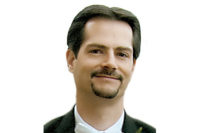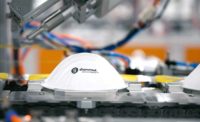Over the past 60 years, the U.S. lost 6 million manufacturing jobs due to lower offshore wages and costs. The hazards of supply chain gaps and the advantages of domestic manufacturing became painfully clear during the pandemic. Destabilizing geopolitical and climate forces exposed our vulnerabilities and the need to address them. These unprecedented pressures are compelling companies to innovate and reshore production back to the U.S. to mitigate global risk and augment resiliency. Here’s a look at how some companies are closing the cost gap and reshoring profitably.
Innovation: Taking a Cue From Henry Ford
Tesla took a cue from Ford’s historic 1913 moving assembly line and transformed it with a revolutionary, modular concept. The company’s progressive new assembly concept produces Tesla cars in five modules: the left side of the car, the right side of the car, the front, rear and floor. All modules are then assembled in a final station and then a glass roof is added on top.
The subassemblies offer more opportunity for automation and can be fully tested prior to final assembly. Tesla claims this radical approach will yield a 40 percent reduction in manufacturing footprint and cut assembly costs in half, making domestic manufacturing for the U.S. market profitable.
Automation and Business Transformation
New automation technologies that overcome labor shortages and offset higher U.S. wages are helping to close the labor-cost gap and reshore more manufacturing to the United States. As labor becomes a smaller share of the total cost of manufacturing, companies that once offshored due to cheap labor are beginning to favor production in closer proximity to the markets they serve. Investments in automation can help companies to reshore profitably.
One such manufacturer is Schneider Electric. Investments in automation and software enabled the company to solve pandemic-related logistics issues by shifting more work from China without significantly increasing operating costs.
Schneider’s “smart factory” in Lexington, KY, now makes 70 to 80 percent of the parts needed for its products in-house. The Lexington plant is so productive that it now ships some parts to Schneider’s Mexico facilities instead of the other way around.
Another company using automation to compete is New England Die Co. Inc. (NEDCO), a job shop Waterbury, CT, specializing in parts made from tungsten carbide and hardened tool steel. The company had been using manual grinders on some parts, but found it difficult to compete with Chinese prices. Long-standing customers were being forced to offshore to China to cut costs. NEDCO invested in a Studer S33 CNC universal cylindrical grinding machine from United Grinding North America. The automated, CNC-controlled machine makes NEDCO competitive—even with batch sizes of one or two workpieces. Using the new machine, NEDCO cut labor hours per part by 90 percent and cut scrap rate from more than 10 percent to zero.
Joe Almeida, NEDCO president, says that capital investment, process improvements and automation technology have been transformational for his business. Automation enabled NEDCO to increase production while overcoming cost and skilled workforce availability issues. NEDCO was able to reshore customers’ work from China profitably.
Reshoring Through Better Design
Oransi, a producer of indoor air purification products, was manufacturing in China. Peter Mann, CEO of Oransi, wanted to reshore manufacturing from China to the U.S., but the product design employed by the Chinese manufacturer made it impossible to manufacture competitively. “If you take apart a Chinese air purifier, it’s got a lot of parts, a lot of screws, and assembly requires a lot of labor, which is, of course, cheaper in China. So we can’t take that product and build it here and be remotely competitive.”
In 2021, Oransi merged with Aviemore Technologies, a motion control manufacturer, and Mann together with Aviemore’s founder, Moe Barani, redesigned the air purifiers from square one with fewer parts.
The new redesigned products are less labor intensive and can be assembled far more efficiently, making it less expensive to produce. The lower price tag and superior quality make it globally competitive. The goal is to shift 100 percent of manufacturing from China to the U.S. within a year, creating about 100 new American jobs. When companies simplify their product designs and reduce assembly steps, they can reshore profitably.
The Best Metric for Comparative Analysis
Total cost of ownership (TCO) is the best metric to use for comparative analysis. The Reshoring Initiative’s TCO Estimator is a free online tool that helps companies account for all factors to compare the true total cost of domestic and offshore sourcing. These factors include overhead, balance sheet, risks, corporate strategy, and other external and internal business considerations.
Using this information, companies can better evaluate sourcing, identify alternatives, and even make a case when selling against offshore competitors. Shifting decisions from a price basis to TCO could lead to the reshoring of 20 to 30 percent of what is now imported.
It’s already happening. In the first quarter of this year, some 101,500 new U.S. manufacturing jobs were created due to reshoring and foreign direct investment. If the current rate continues, more than 400,000 U.S. manufacturing jobs will have been created by year-end.
When new processes, technologies and strategies are factored into a reshoring project, companies can amplify resiliency benefits and reduce or even eliminate the offshore cost gap. For help, call 847-867-1144 or email harry.moser@reshorenow.org.
Editor’s note: Harry Moser is the president of the Reshoring Initiative. His column will appear every other month, alternating with Austin Weber’s “On Campus.” Has your company reshored production? Are you thinking about it? We’d like to hear of your success or help you achieve it. With your approval, we would love to report on your successes or opportunities in future issues. Contact harry.moser@reshorenow.org.




